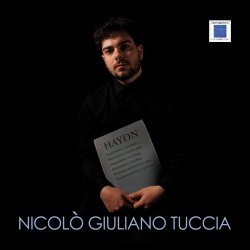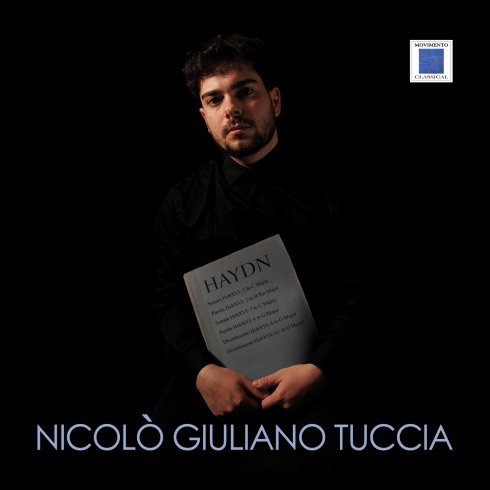

The Keyboard sonata in G Major HobXVl:8 is one of Haydn's most famous works for keyboard music. lt was written around 1766 and is characterized by its freshness and lightness, typical of the keyboard music of the time. The work consists of tour movements: an allegro, a minuet, an andante, and a final allegro. The first movement, in an allegro tempo, opens with a lively and playful theme which alternates with a series of more delicate and suspended episodes. The second movement, in minuet time, is characterized by a sweet and cantabile melody that winds its way over a soft and delicate harmonic accompaniment. The third movement is a very singable and short andante that leads to a brilliant and amusing fourth and final movement: the latter has very interesting hints, which characterize Haydn's style and his era; lor example, the use of triplets and grace notes.
The Keyboard sonata in C Major HobXVl:1 was written around 1766 and is characterized by its elegance and formai beauty. The work consists of three movements: an allegro, an andante, a minuet-trio. The first movement, in allegro tempo, opens with a amusing theme which develops through a series of more austere episodes in the minor key. Here too it can be seen that Haydn is interested in playing through the alternation of the major and minor keys. The second movement, in tempo andante, is a delicate lyrical aria that develops through a series of increasingly refined harmonic and melodie variations. The third movement, in minuet time, is a cheerful court dance, characterized by a light and pressing rhythm thai flows into a more melancholy and sad trio, in the key of C minor, to then return to the form of the initial minuet.
The Keyboard sonata in C Major Hob XVl:3 was written around 1760 and is characterized by its elegance and lightness. The work consists of three movements: an allegro, an andante, a minuet-trio. The first movement, in allegro tempo, opens with a lively and playful theme, punctuated by eighth-note triplets that create rhythmic stability. The second movement, in tempo andante, is a sweet melody that develops through a series of increasingly refined harmonic passages. Haydn in this period loves to let the performer breathe with slow and singable tempos. The third movement, in minuet time, is a very cheerful and lively court dance which contrasts with the dramatic character, in minor key, of the trio, to then have, through the repetition of the minuet, a conclusion in C major.
The Keyboard Sonata in G Major HobXVl:6 was written around 1765 and is characterized by its elegance and liveliness. The work consists of tour movements, each representing a different type of dance of the era. The first movement, an allegro, opens in the key of G major. Il has a characteristic shape of the time, in an exposition on the Ionie, the development on the dominant and the reprise on the tonic. In the second movement, a minuet and a trio are contrasted in different character: the minuet is in the major key, while the trio is in the minor. The third movement is a very thoughtful and funerea! adagio in the key of G minor. The fourth and final movement is an "allegro molto". Once again, Haydn wanted to focus on the liveliness and keyboard virtuosity of the time. Here tao there is a tonic-dominant contrast.
The Keyboard sonata in B Flat Major HobXVI:2 was written around 1765 and is characterized by its elegance and lightness. The work consists of three movements, each of which has different shape and characteristics. The first movement , although 'moderate', is a cheerful but at the same time serious and brilliant dance. The second movement is a very cantabile and thoughtful largo. The left hand accompanies the right hand, which sings melancholic and dramatic. The third and final movement is a minuet-trio. Also this time the major-minor opposition of the two movements is insisted on.
The Keyboard Sonata in G Major HobXVI: G1 was written around 1760 and is characterized by its elegance and virtuosity. The work consists cl three movements: an allegro, a minuet-trio and a presto. The lirst movement, in allegro tempo, is a brilliant virtuosic piece that develops through a series of quick but witty passages. The second movement, in minuet form, is a sweet and melancholic melody that develops through a series of refined and delicate harmonic passages, set against a very lacetious trio compared te the opening minuet. The third and linal movement, in tempo presto, is a virtuosic finale that develops through a series of fast and complex passages.
In summary, this is a collection cl six different works by Haydn, representative of his versatility and his ability te create music cl various genres and styles: from the amusements te the matches, each work has a different atmosphere, but always refined and well structured . Haydn presents itsell in this period as the embodiment cl the classica! form, very noble bui cl quiet grandeur, as, by the way, was the Vienna of that era.
Haydn's lite was as interesting as his music. Born in a village near Vienna in 1732, he had an early musical education and soon began te work as a prolessional musician. In 1776 he became Kapellmeister of the Esterhazy lamily, one cl the most prominent noble lamilies in the Austrian Empire. Haydn worked lor this lamily lor more than thirty years, producing an enormous amount cl music lor his court, from operas te symphonies, from sonatas te cantatas. During this period, Haydn gained a reputation as one cl the loremost composers of the age, influencing many other musicians and becoming a role model lor the young composers who lollowed, such as Beethoven, Mozart and Schubert. In his lifetime, he composed over one hundred symphonies, over eighty string quartets, many vocal works and a wide range cl keyboard music. He died in Vienna in 1809, leaving behind an unparalleled musical legacy.


Nicolò Giuliano Tuccia
Was born in Emilia-Romagna: born in 1999, he began studying the piano at the age of 8. Nicolò Giuliano Tuccia boasts over 30 prizes in national and international competitions and more than 50 recitals as a soloist in important institutions and concert halls. His career starts from 2018 performing with the "Circle Symphony Orchestra" of Padua playing "L.V. Beethoven” the concert n.3 Op37 for piano and orchestra. In2019 he graduated in piano at the Rimini Conservatory with 110 cum laude. In 2020 he stands out at the "Sergio Fiorentino piano competition" which will later give him a concert in Helsinki for the University piano circle supported by Eero Tarasti. In 2021 he made his debut at the “Kaunas Piano Festival” obtaining a scholarship so as to perform at the “M.K. Čiurlionis” from Kaunas. Also in the same year he won the special prize at the Kings Peak International Music Competition obtaining a masterclass with maestro Anthony Tam and the first prize at the Map international Music Competition, which will subsequently give him prize concerts in the USA.
In 2022 he carries out an intense concert activity making his debut not only with the Orchestra of the Conservatory "B.Maderna di Cesena" at the Teatro Verdi in Cesena with 1053 by J.S.Bach, at the Sala "Marco Biagi" in Bologna, at the Circolo Culturale "G. Fantoni” in La Spezia and at the “Music Hall” of the University of musical semiotics in Helsinki, under the invitation of the famous maestro Eero Tarasti.
Nicolò Giuliano Tuccia currently attends the piano academy of Imola "Incontri col Maestro" under the guidance of maestro Andrè Gallo and the European piano academy "High musical education" under the guidance of maestro Giuseppe Devastato.
He is artistic director of the "Guido Agosti" concert series as well as president of the "Forlì Cultura" association. In 2023 he will perform in various European cities such as Rome, Rovereto, Lecco, Umeå, León,Londra and Berlin.
